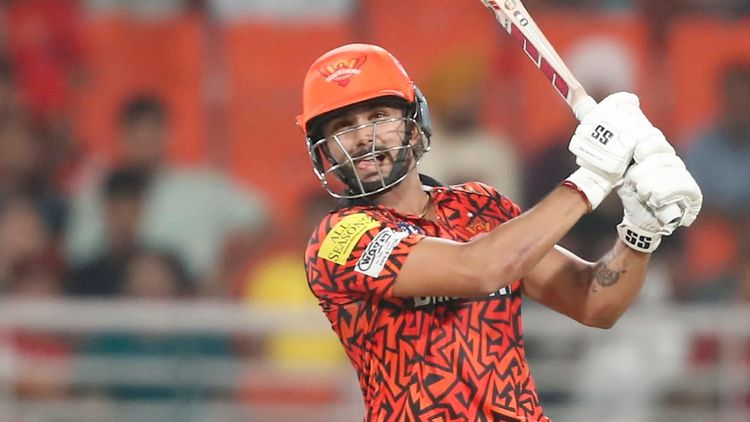Nitish Kumar Reddy flexes his seam-bowling all-round credentials

Nitish Kumar Reddy's first memory of the IPL is a misfield. The year was 2023, the bowler was Bhuvneshwar Kumar, and he was fielding at deep point. In domestic cricket, he had become used to judging the ferocity of the shot from the sound the bat made. In the IPL, it was just so loud that he had no cue to go by. He charged in thinking the batter had sliced the ball, and ended up completely missing it.
Nitish finished that IPL with two games without getting a chance to bat, without getting a chance to be the reason for that noise in the stands himself, but it is instructive what he remembers. Playing his second match this year, probably his first touch on the ball was arguably the toughest kind of catch in the sport: running back and taking the ball over your shoulder. Never mind that slight error in the last over, when he ended up parrying an overhead chance over the fence, he was trusted enough to be placed in the fielding hot spots: point in the powerplay, the boundary in the final over.
These are not the most important things a cricketer does on the field. Those are done when batting or bowling. Nitish's state side Andhra trusts him with both but only in first-class and List A formats. Only five out of his nine T20 matches have come for Andhra, the last of those in 2021. While the Sunrisers Hyderabad invested in him on promise alone, he blossomed playing first-class cricket for Andhra, picking up a five-for each in the last two seasons, including one against the eventual champions, Mumbai.
It's Nitish's batting that got him into the SRH XI when Mayank Agarwal turned up unwell for the last match. It was in favour of his batting that Nitish, an opening bowler and opening batter in his Under-16 days, restricted his bowling in his growing-up years.
The first hit that Nitish got in the IPL wasn't a challenging one. He came in to bat at No. 6 with just 25 required off 26 balls, but he finished the game in style, switch-hitting Ravindra Jadeja for four and lofting a Deepak Chahar slower one into the sight screen.
Wednesday in Mullanpur was different. SRH, the most explosive batting unit this IPL, were caught in seaming and swinging conditions and were reduced to 64 for 4 in the 10th over. Instead of doubling down, Nitish now began to counterattack. He later said that he had to target his bowlers on a difficult pitch. His target was the lone spinner, Harpreet Brar. Out of his 64 off 37, 38 came off 16 balls of spin he faced. Among others, he pulled international bowlers Kagiso Rabada and Sam Curran for sixes.
More than the outcome, it was the thought process and the planning that stood out. Nitish's captain acknowledged Nitish's intent, saying they would rather they were bowled out than score a watchful 150-160. Nitish's intent fell in line with that philosophy. Then came his ability to pick his bowlers. Early rushes suggest SRH might have found themselves another spin hitter, but teams will not feed him spin from now on.
Before bigger tests come, though, Nitish provided a sight for sore eyes if you follow India's fortunes in limited-overs cricket. A hitter who bowled in the late 130s. At least for two overs, he did. Then he used the slower bouncer to get Jitesh Sharma's wicket.
It is extreme early days, but Indian cricket has something called a target group, which includes players outside the centrally contracted ones. Basically those who play A cricket regularly and a few others. If Nitish can continue to have a good IPL, just for the fact that he is a seam-bowling allrounder who is bowling more than 20 overs per first-class match on an average, he could find himself in that target group.































































